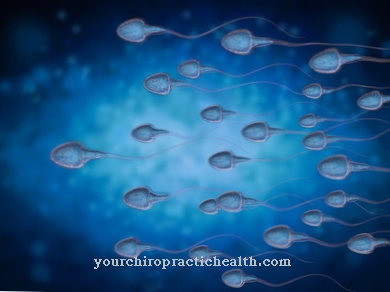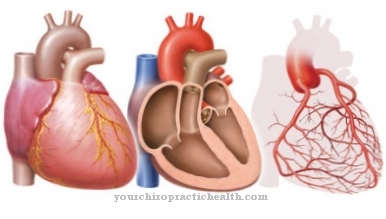At a shock it is a harmful process in the human body. This is able to be life-threatening and can appear in different forms. The basis is the undersupply of the organism with oxygen due to different causes.
What is a shock?

A shock leads to the fact that the circulation of the blood in small vessels no longer works properly. Instead it is reduced. However, the red blood cells are responsible for bringing oxygen to the cells. If there is a lack of supply, the tissue can no longer work properly.
An undersupply is followed by metabolic disorders. Accordingly, quick action is required when a shock occurs. Those affected should be given medical shelter within a short time frame.
The causes include, for example, bacterial infections, frightening and anxious situations, allergic reactions or severe blood loss.
The shock manifests itself through pale, cool skin, cold sweat, accelerated breathing, freezing and psychological phenomena such as states of fear, restlessness and confusion. These can also lead to unclear statements by the person. The more the oxygen deficiency progresses, the clearer the symptoms usually become. In the further course, those affected can lose their consciousness.
Function & task
The characteristics of the different types of shock are based on the underlying cause. All types of shock share some common symptoms. These include, for example, a drop in blood pressure, which is responsible for the release of adrenaline. Adrenaline, in turn, causes the heart rate to increase and arterioles to narrow.
In this way it is possible for the body to keep the blood pressure stable for the time being. The body ensures that the blood flows through the brain and heart, so there is regulation through redistribution.
If the oxygen deficiency continues, the number of acidic metabolites increases. In this way, there is an increase in volume depletion because the tissue loses fluid. The blood pressure continues to decrease and the arterial blood vessels lose tension.
The blood builds up in the arteries and blood clots can form. These are also known as microthrombi. If they become detached from the blood vessels, it is possible for them to clog other veins and prevent the supply of oxygen.
In this way, a shock can trigger multiple organ failure. The kidneys stop working, which means that urine is no longer produced, the reduced blood supply to the heart leads to heart failure, embolisms can be found in the lungs, and the development of pulmonary edema cannot be ruled out. Multiple organ failure is often fatal.
However, different forms of shock exist. These include, for example, the hypovolemic. This occurs due to high blood loss, as occurs with severe injuries. The blood pressure continues to drop in the different stages. Cardiogenic shock is triggered by heart failure. Heart attacks or heart muscle inflammation are possible. Anaphylactic shock is caused by a very strong allergic reaction, such as a wasp sting. As blood pressure falls, the heart rate rises, breathing and circulatory arrest can occur. Inflammation can be the basis of septic shock. The inflammation is carried through the bloodstream, causing blood poisoning. If the inflammation has not been treated for a long time, it can affect the entire organism.
Illnesses & ailments
Depending on the type of shock, different complications can arise. These include a blood clot. If the thrombus is released from its original position and migrates through the organism, it can block various vessels.
Pulmonary embolism is common. An embolism is similar to a heart attack. Here, however, the veins are affected. However, an embolism is a life-threatening condition.
If patients are not treated immediately, the disease often results in death. However, if the symptoms are successfully treated, further therapy is still necessary for the rest of life. This includes, for example, wearing compression stockings. This is to prevent the occurrence of a new thrombosis.
As the shock progresses, the blood shortage also affects the heart. This no longer receives sufficient oxygen and ceases to function. The reduced pumping power in turn ensures that less blood is pumped through the body. Heart failure can initially only affect one side of the heart or both. Usually, however, bilateral heart failure is less likely to be diagnosed.
The therapy is based on various factors. In the case of multiple organ failure, which also affects the heart, the treatment approaches may no longer be sufficient.
Shock can also be responsible for pulmonary edema. This is the accumulation of water in the lungs. Symptoms such as coughing and restlessness, but also shortness of breath and rattling breath occur.
The lack of oxygen can cause cyanosis, causing the lips and mucous membranes to turn bluish. Pulmonary edema can lead to lung failure. In the last stage of lung insufficiency, both the blood flow to the organ and the transfer of oxygen into the blood are disturbed. Acute lung failure is one of the most common causes of death from shock.

.jpg)






















.jpg)



